A Year in Review: Bridal Bouquet Shapes
Dec, 13, 2018
We have seen so many exciting changes in wedding floral design over the past five years. From creative installations to the expanding roles of greenery and unique flowers; the pinnacle of these changes is reflected in the gorgeous bridal bouquets that our industry has produced in 2018. The evolution of the bridal bouquet has found its energy from the creative use of color, texture and in the actual shape of the design.
Every bridal bouquet is custom. Literally, no two are alike. We love to use inspiration photos as a conversation starter when we meet with brides. The final description in your proposal will describe what you like about your original inspirations, but also, the things that you would change. One of the important distinctions will be determining the shape your bouquet will take.
A traditional cascade
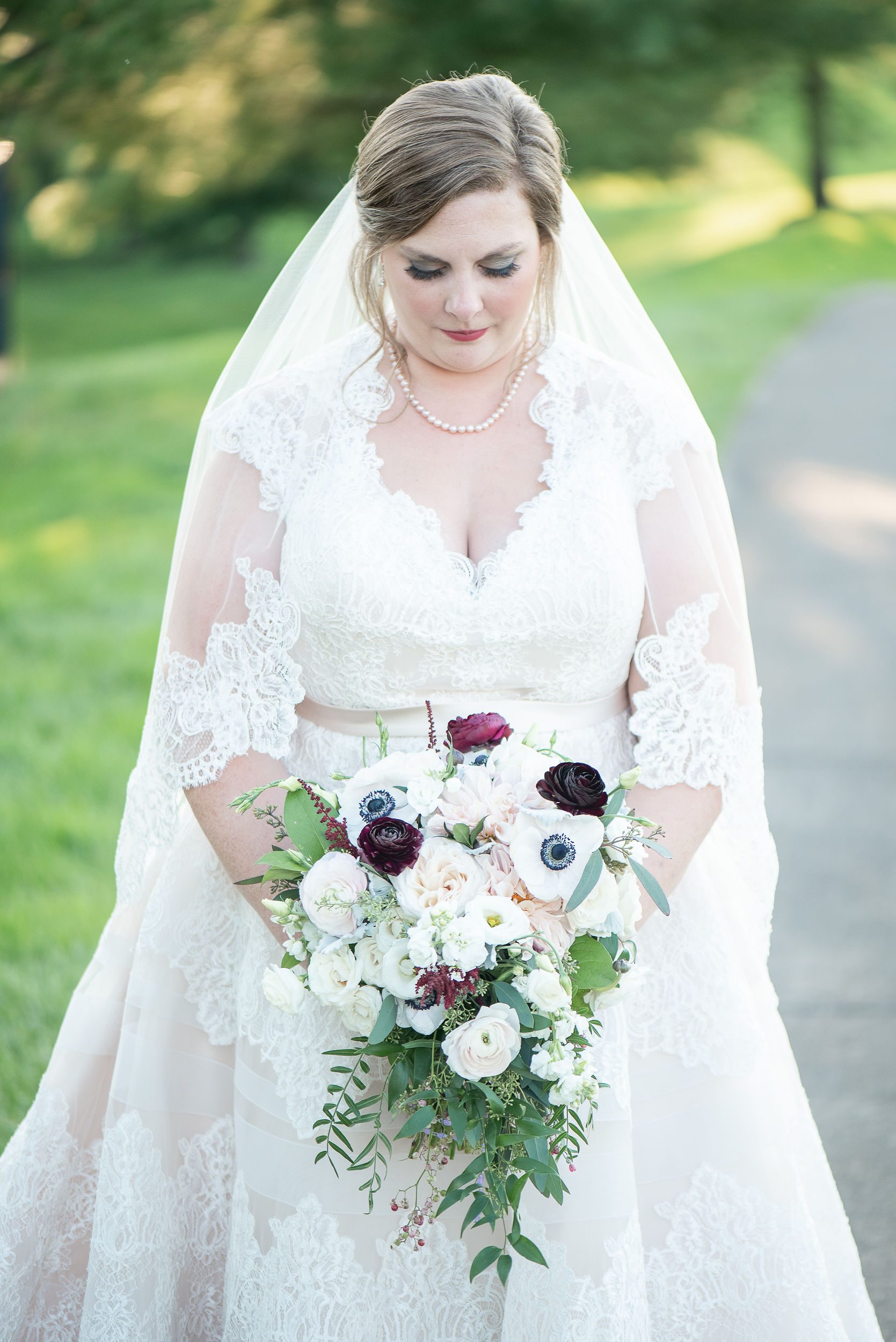
Cascade design photographed by Heather Chesky at River Creek Country Club.
It may be traditional, but it’s making a comeback. Cascading bouquets are timeless and allows you to join a century or more of brides who carried a cascade (they were last chosen with enthusiasm after Lady Diana was married in the 1980s). Today, the flowers that we choose for cascading bouquets contribute to a much more modern look.
We are happy to see a resurgence in the popularity of cascades for two reasons. One, they are sweepingly dramatic and romantic. Two, it’s nice that you have lots of design choices, contributing to your own creative expression.
Traditional cascades may often be designed in a cascade holder, especially in designs where there are a lot of flowers deep in the cascading part of the design. In this Fall cascading bouquet, we used Pepperberry, Stock and Astilbe (trendy and leggy blooms) along with rounder flowers and a complement of greens at the bottom.
The second photo shows a cascade that relies heavily on the greenery to create the drape. Note, the bridesmaids carried only bouquets of loose greens including Eucalyptus and Dusty Miller.
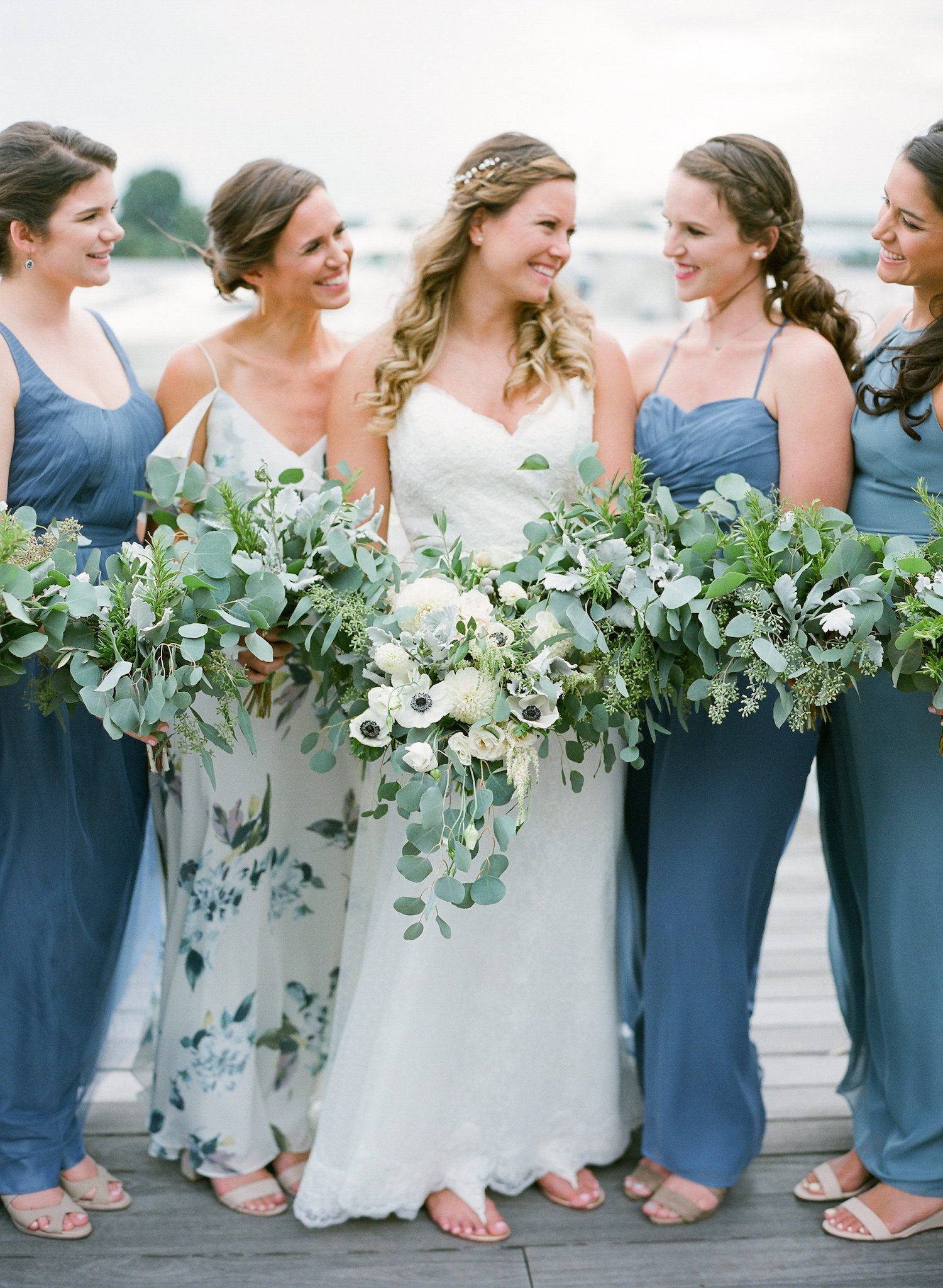
Less traditional and looser cascade photographed at District Winery in Washington DC by Abby Grace Photography.
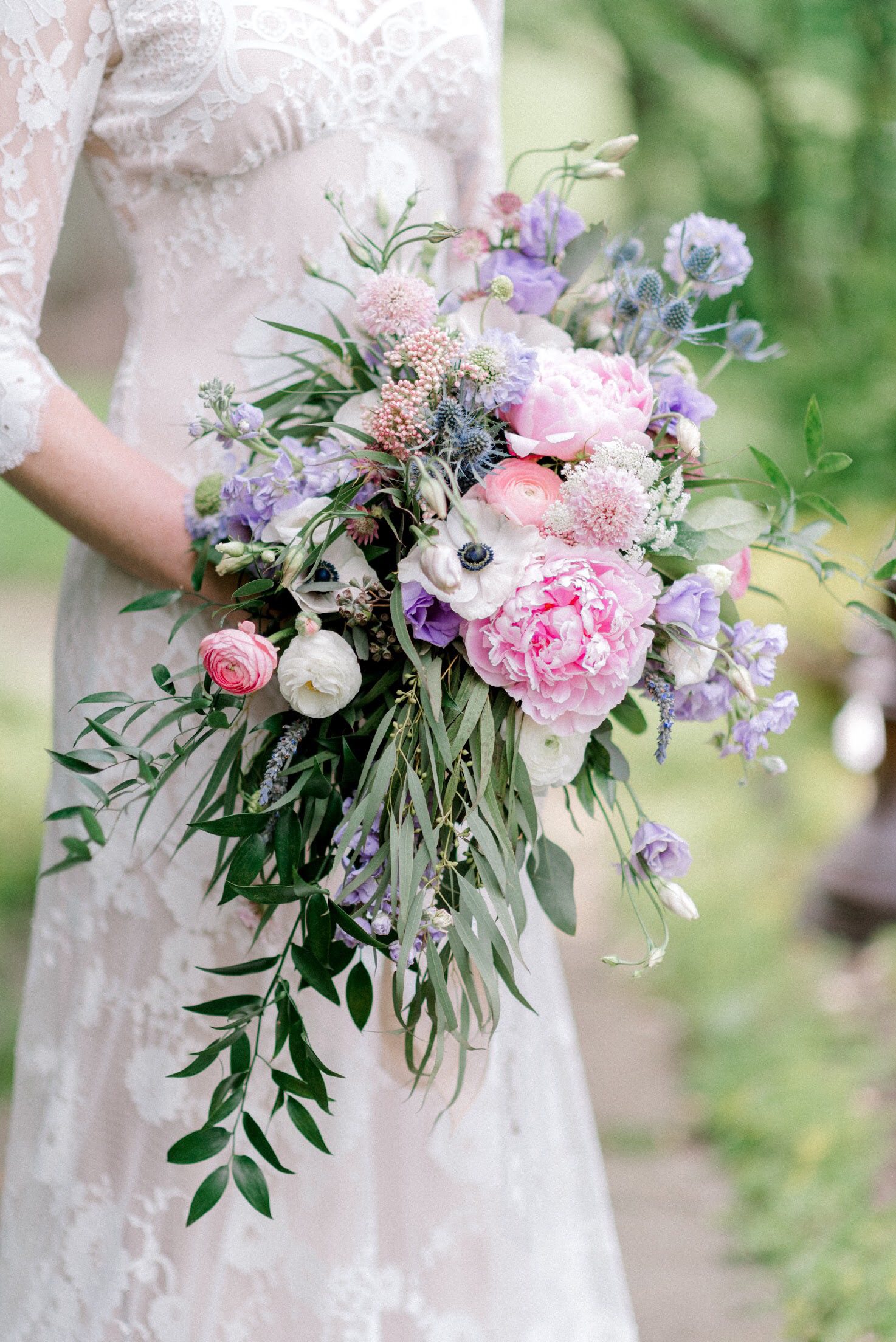
Photography Du Jour at Silverbrook Farm.
Asymmetrical Design
The bride that created this bouquet with us chose a beautiful lace dress from Claire Pettibone. It was her idea to carry an asymmetrical design so that all the gorgeous lace on the skirt would be visible while she held her bouquet. The muted color of the “garden” and “field” flowers worked perfectly at Silverbrook Farm in Purcellville, Virginia where we added a floral installation of single blooms tied with ribbon from a suspended birch pole. She did not want to include any Roses, so we leaned on Peony, Ranunculus and Scabiosa to achieve her palette.
Remember, an asymmetrical design should be designed to your right so your groom or partner won’t find him or herself bumping into your flowers. We can also create an asymmetrical design with a bouquet that is heavy on florals with less greenery, it simply depends on your preference.
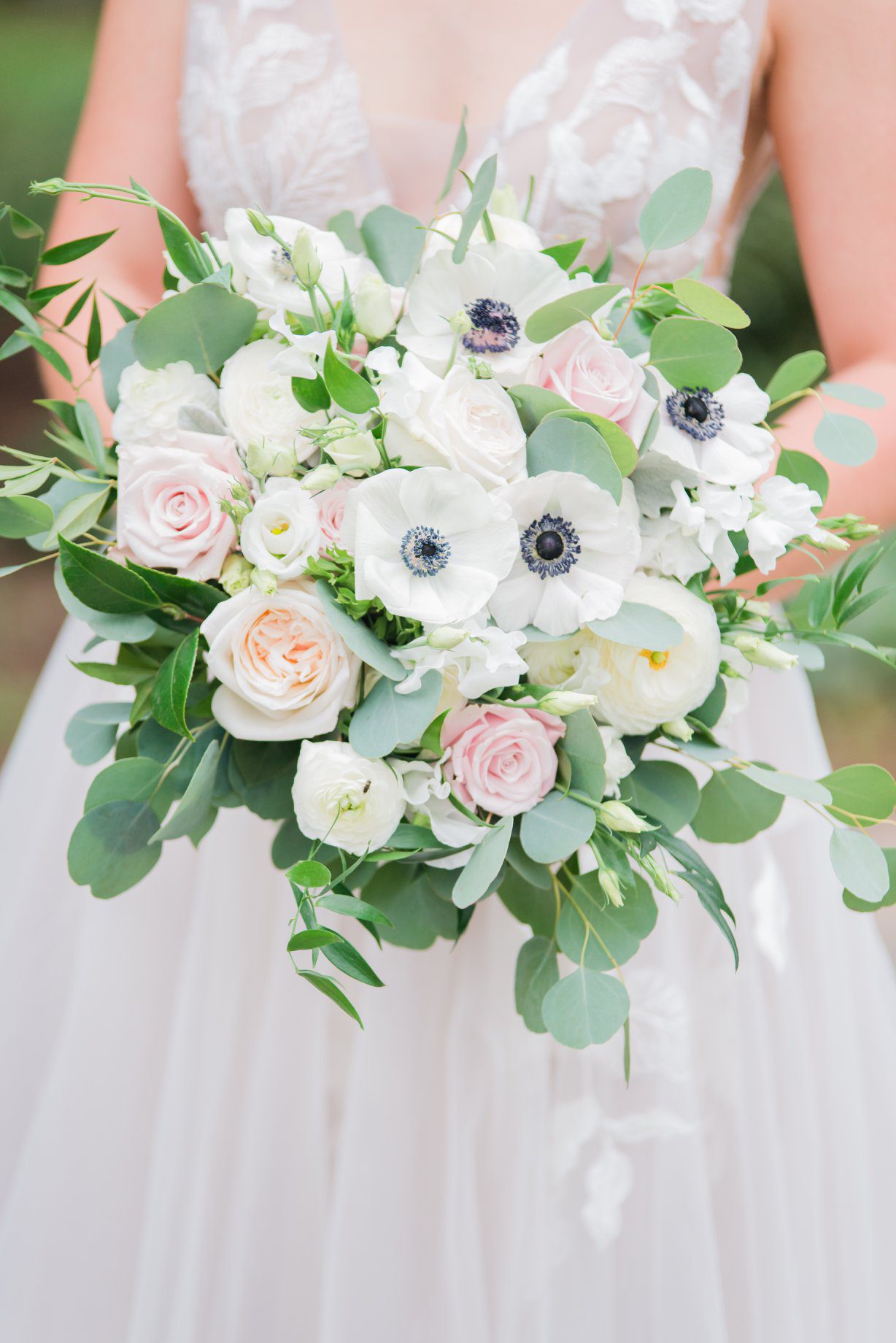
Photography by Joffoto at Rust Manor House.
Tear Drop
This design is different from a cascade because it is has a more subtle shape. This Rust Manor House (Leesburg, Virginia) bride wanted just a hint of ballet slipper pink in her bouquet. We selected White O’Hara Garden Roses because of the touch of pink in the center of the open bloom, and Sweet Escimo Roses that arrived in the perfect shade. Because her palette was pale pink, navy and white, we used Panda Anemone which is notable for the dark navy center and pure white petals. We added Sweet Pea to add a little texture and Lisianthus, another bloom that will lend true white to your bouquet. Just a few flowers at the bottom begin to face downward with wisps of greens to get a “tear drop” shape.
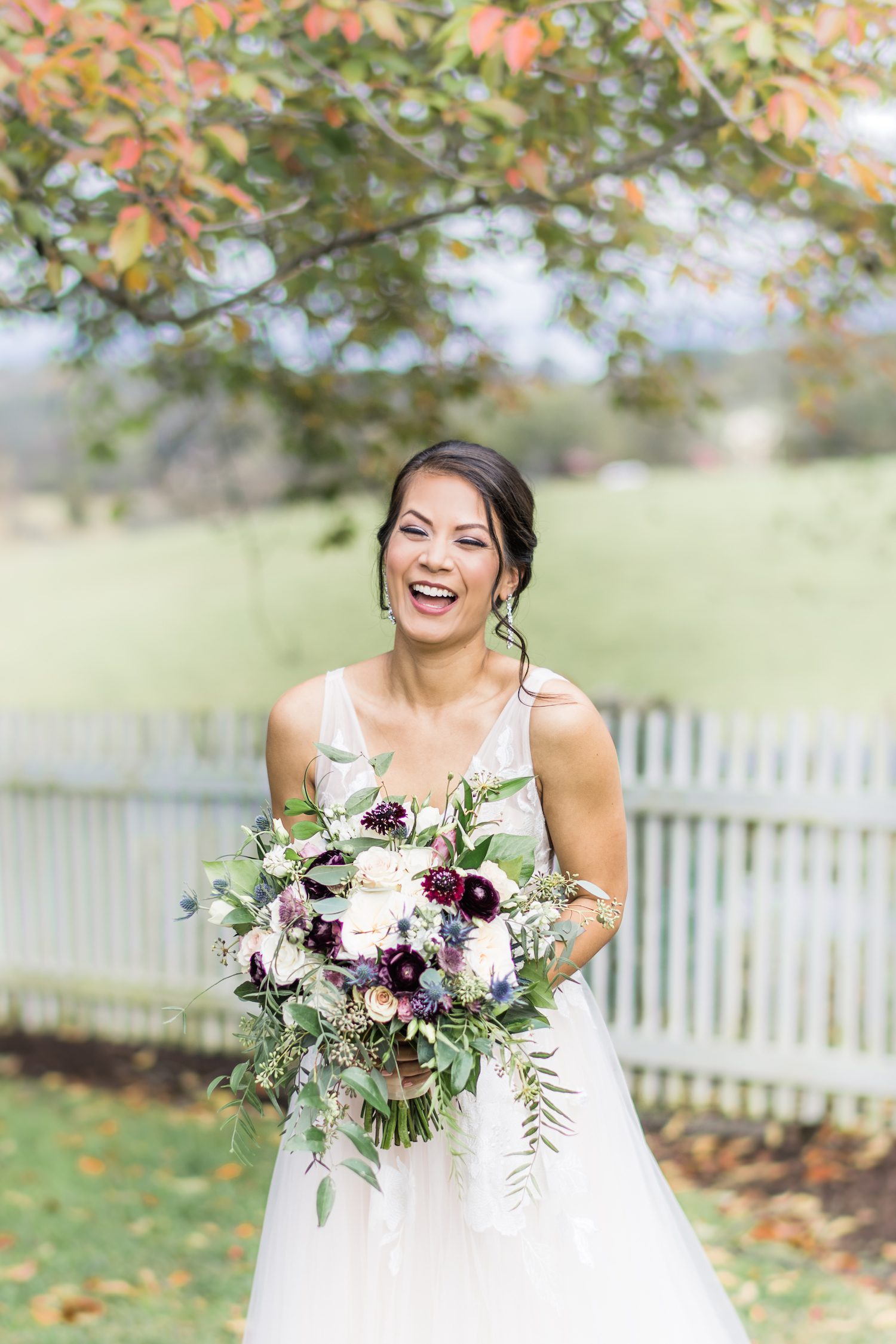
Photography by Stephanie Messick at Stone Tower Winery.
Rounded
Even the rounded bouquet has been transformed in the bouquet revolution. While still round in shape overall, this design called for both flowers and greens to gently break the line of the design. Thistle, Scabiosa and Astrantria are very textured blooms that found themselves on the edge of the design. Softer Roses and Ranunculus softened the look with Ranunculus in burgundy and both Quicksand and White O’Hara garden Roses in ivory to blush. The bride wanted to have a balance between neutrals and more vivid color. The recipe for this bouquet called for about 50% white and ivory with the balance of flowers in deeper hues and greens.
This second late Spring bouquet (below) has white Gardenia Peonies and Panda Anenome with Rice Flower and Tulips. The recipe called for just a little bit of green so the flowers had to do the heavy lifting in creating the design. These are two very distinct looks that you can choose from; both dramatic, romantic and pretty.
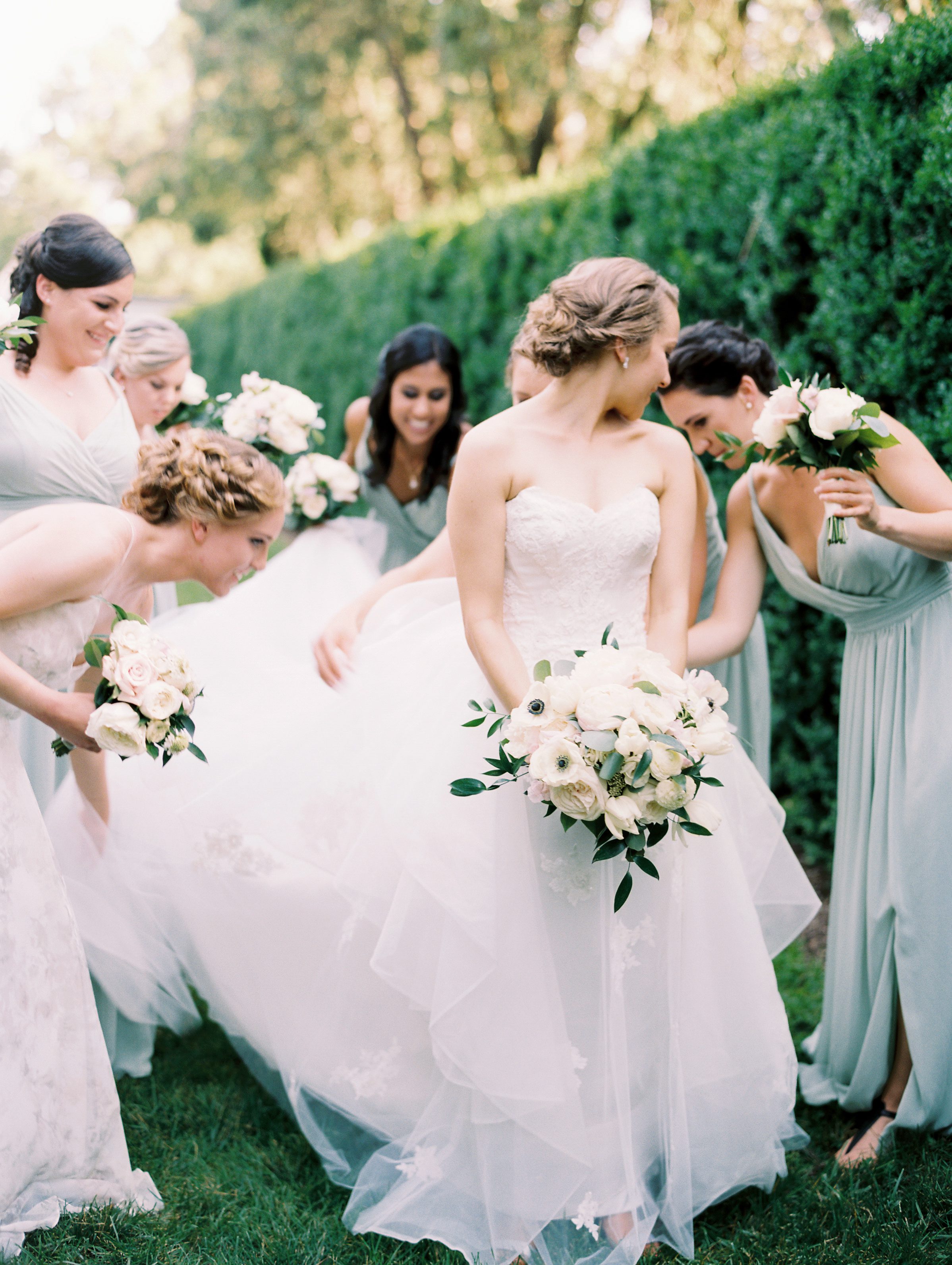
Photography by Lisa Zeising for Abby Jui with Roberts and Co. at Oatlands in Leesburg, Virginia.
Horizontal-ish
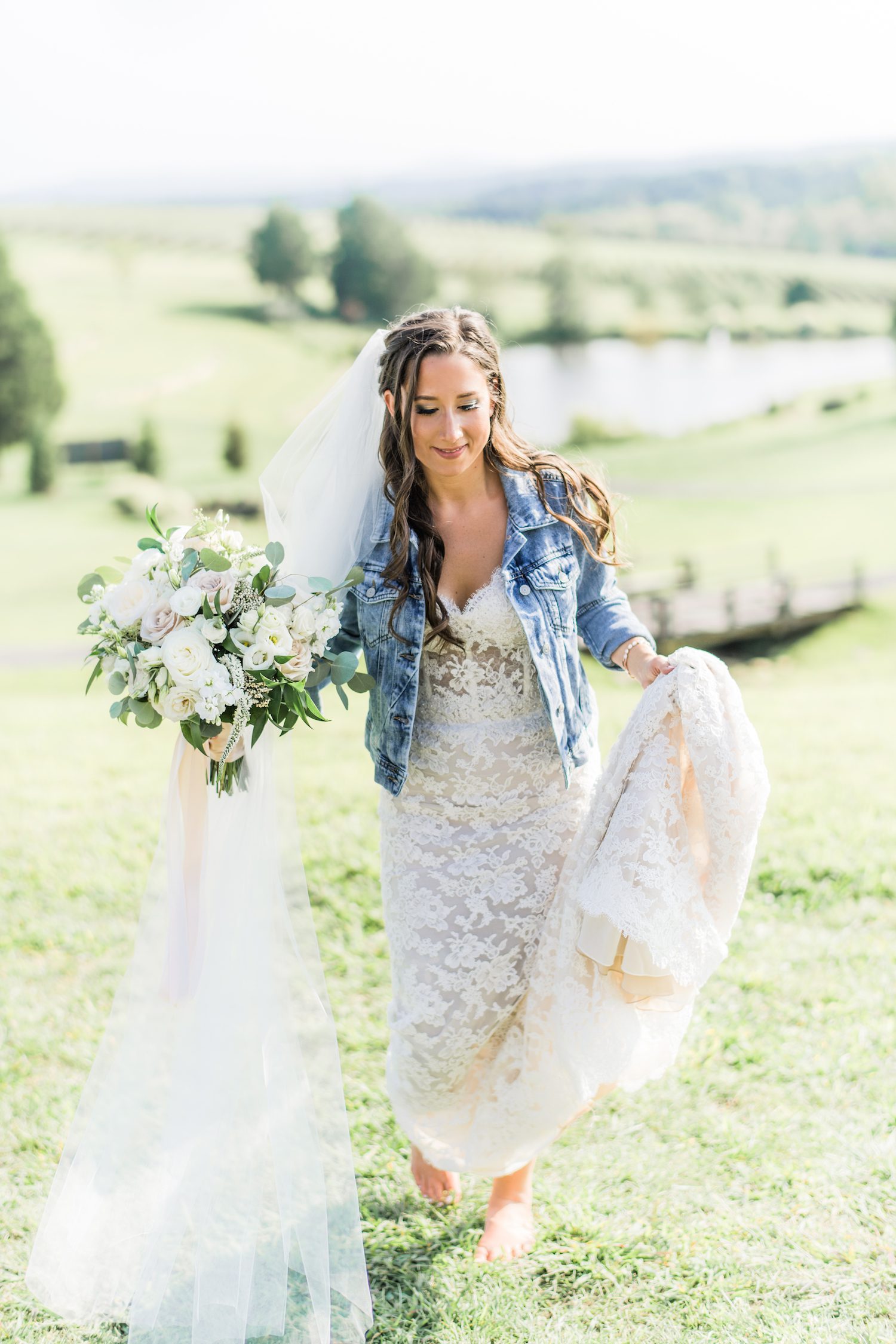
Photography by Stephanie Messick at Stone Tower Winery.
Here are two different color palettes in a design that starts off rounded and then gets lots of fullness on the sides creating a horizontal shape. I think these bouquets are lovely because we are able to get so many individual blooms in your photos. Whether your working with a softer palette or more colorful blooms, we see so many of the varieties within the bouquet.
This design has a lot of flowers. In fact, we used an unseen chicken wire armature and added the Quicksand Roses the day of the wedding. This allowed us to create more fullness while preserving the fitness of these blooms. We have so many brides who mention this bouquet for its’ horizontal shape. The bride carried the bouquet so well despite her petite size (it’s possible her forearms were a little sore on her honeymoon). The soft white, ivory and pale pink flowers looked so beautiful against her lace gown. Veronica and Rice Flower added lovely texture as seen in the photo at the top of the page.
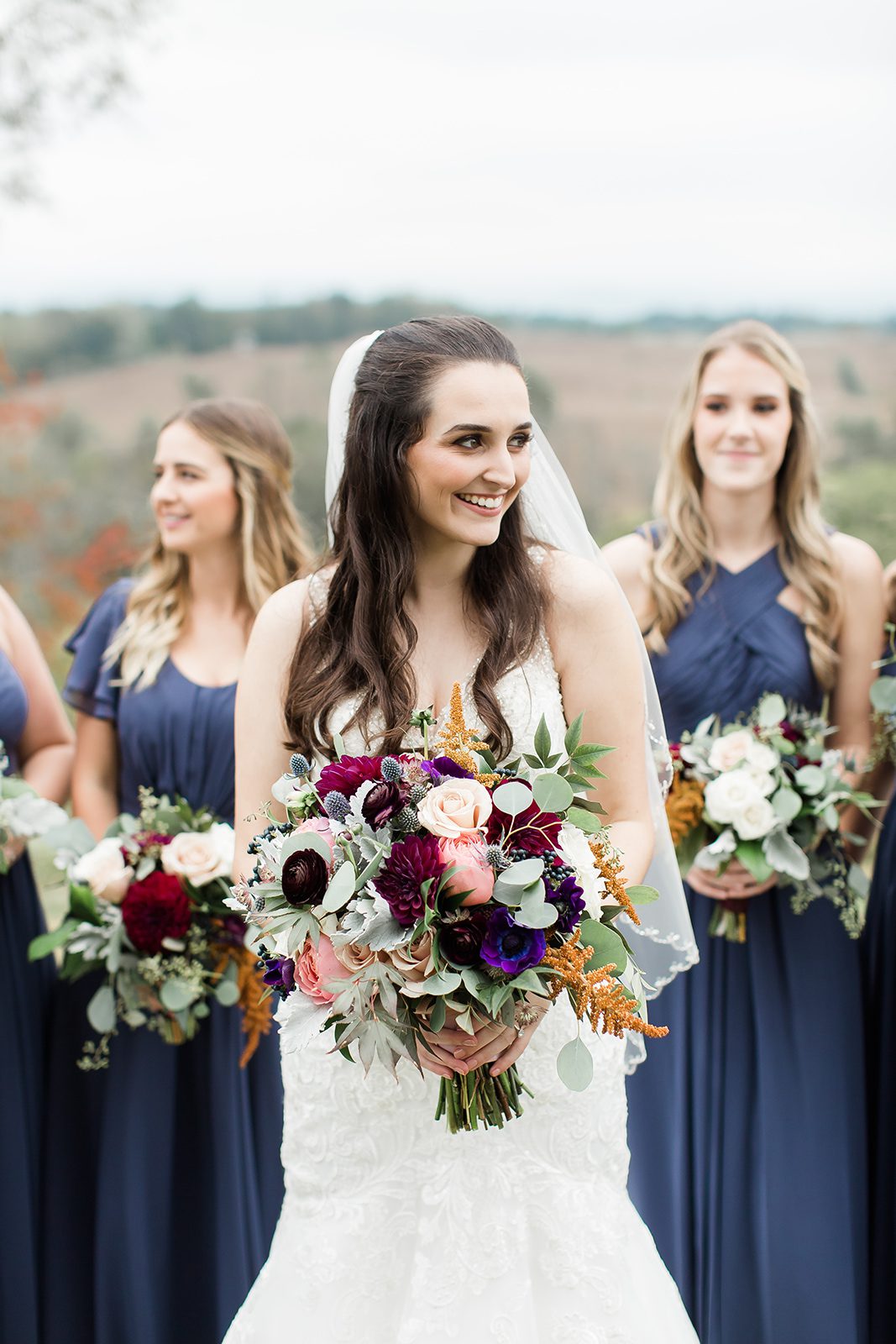
Photography by Candice Adelle at Blue Valley Vineyard.
This more colorful bouquet included a beautiful shade of Amaranthus (the leggier bloom at four o’clock) that captured the gold the bride wanted to include in her color palette. The peach Ranunculus and Sweet Antique Garden Roses blended the warmth of the gold. The French blue came from the Viburnum berries and Thistle. We completed her palette with more rounded flowers in burgundy and deeper purple tones including dark purple Anemone.
Color is continuing to be popular and we love the interesting combinations that we are preparing for 2019.
Your custom bouquet design begins as soon as we sit together for your creative consultation. We’ll spend more time on your bouquet than we will any other aspect of your decor. This initial discussion will help us create the designs for the rest of your wedding.
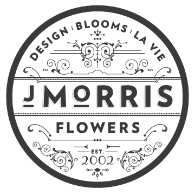
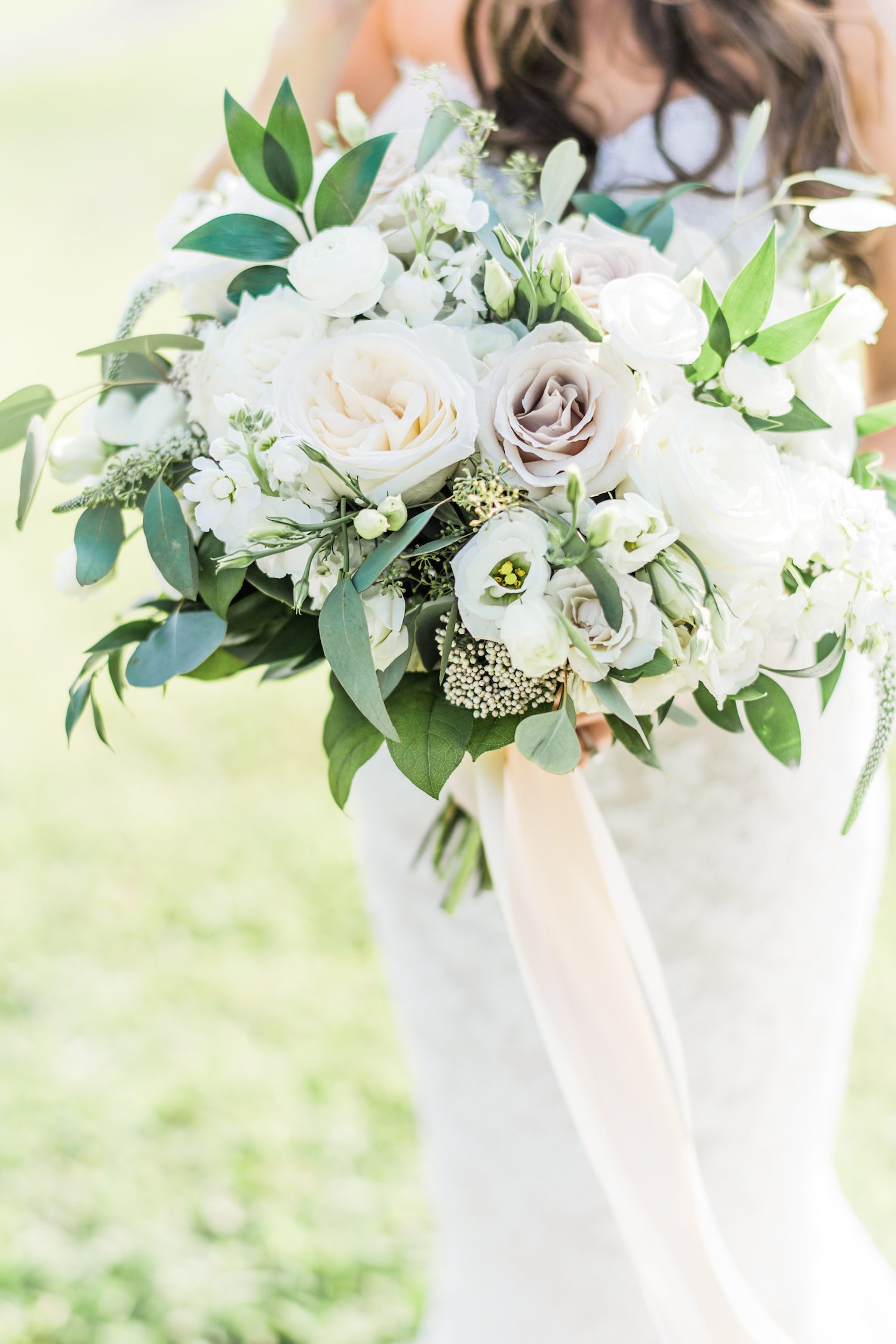
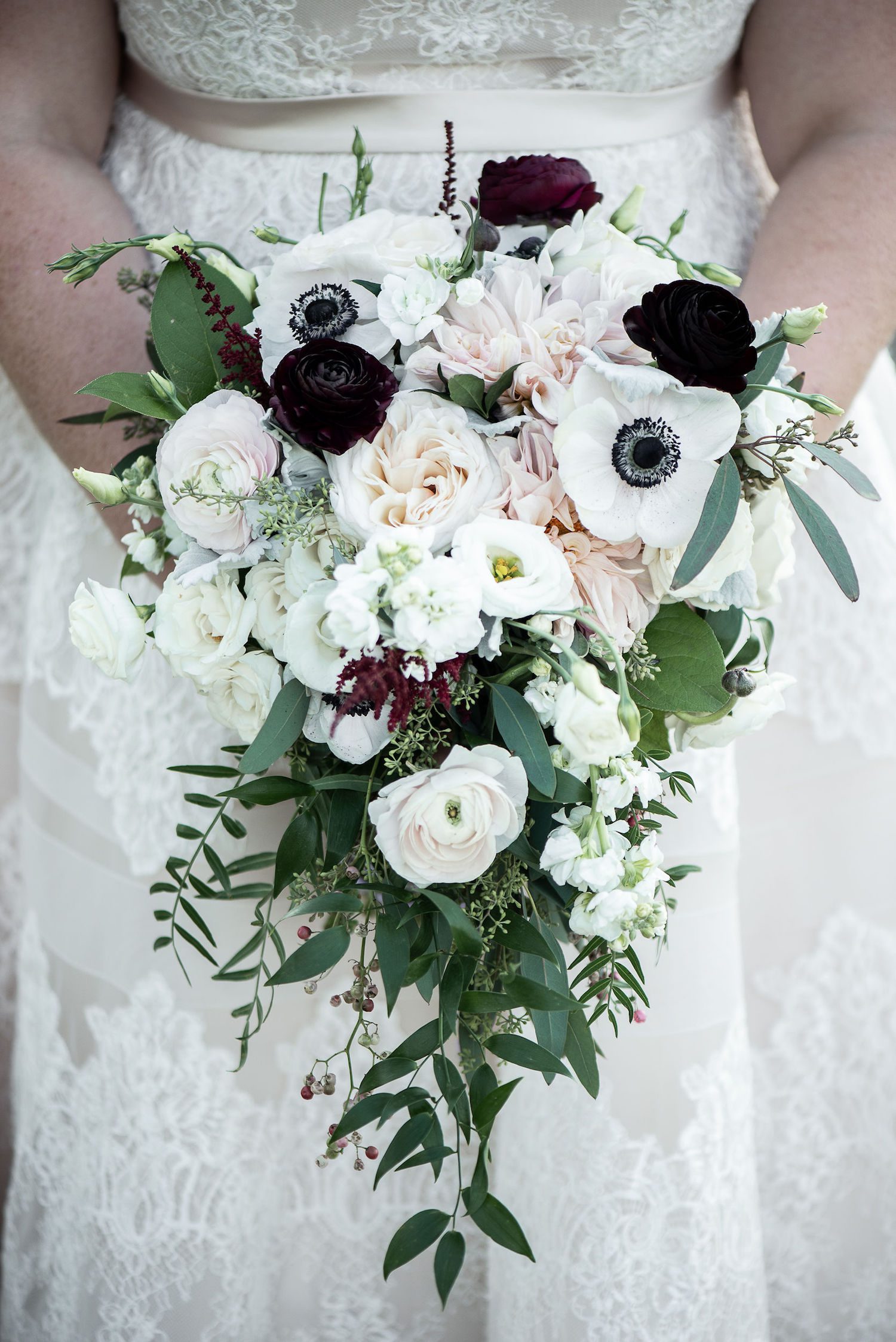

Leave a Comment